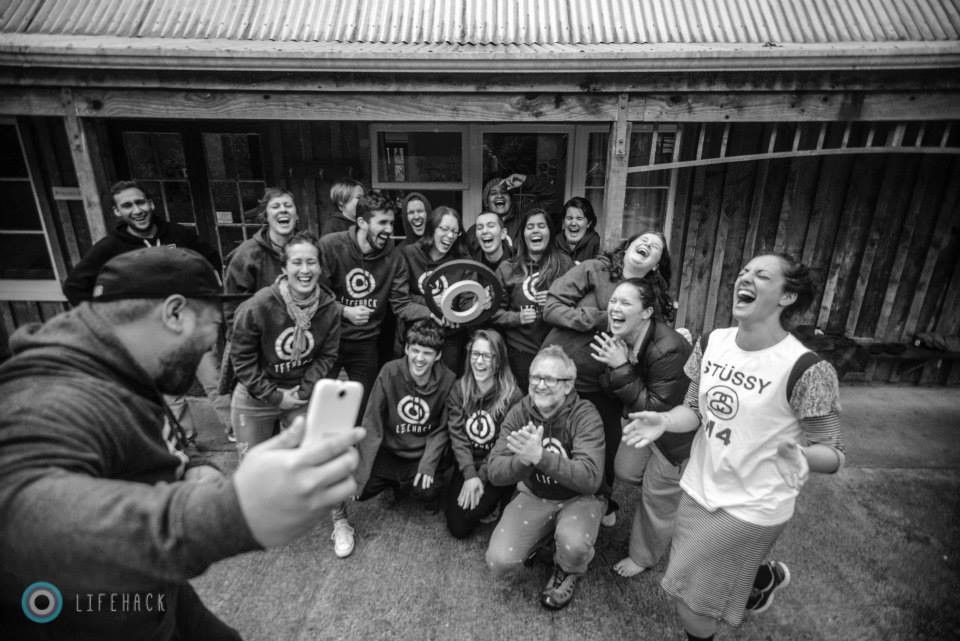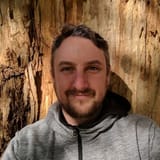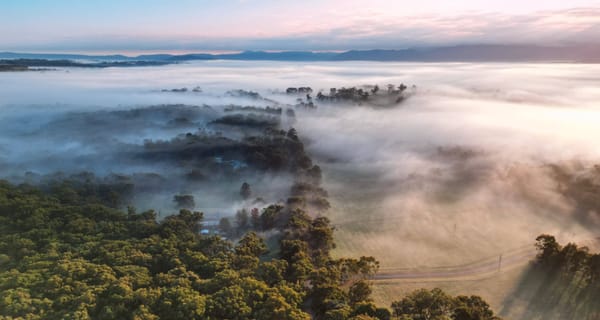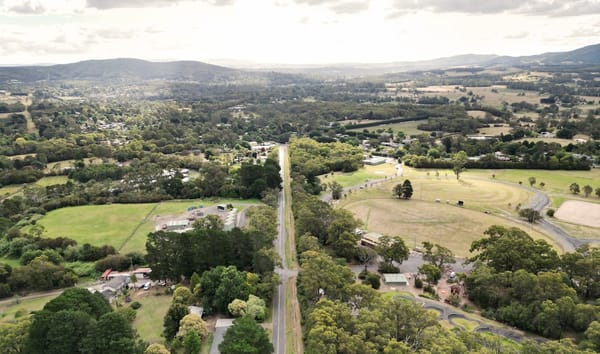The Relational Field

Musings on the importance of the quality of relationships in the context of social labs and social innovation programs
TLDR;
- Building community is an end in itself, and one of the best factors to increase the health and resilience of systems.
- Building relationships shouldn't be left to 'happen along the way'
- Investing in building relationships up front dramatically improved all outcomes of our programs
Recently I was invited to speak at a meetup in Sydney, that was focused on social labs as an approach to designing with communities, to achieve better outcomes when addressing complex challenges.
Social labs are platforms to tackle complex challenges, rooted in a prototyping paradigm (experiment-to-learn) instead of a strategic planning paradigm (analyse-to-predict).
This shift to a prototyping approach is an important one, as globally we’re experiencing a complexity gap.
What is a complexity gap? Well, it seems strategic planning approaches are driving a wedge between our willingness to respond to increasing complexity, and the expectation that we can actually improve the negative consequences of these complex problems.
Whilst distilling my thoughts about my own experience with social labs, I noticed something bubbling to the surface of all the notes I was scrawling whilst waiting for my flight. The more I looked, the more obvious it became.
The work of intervening in complex challenges is built on a myriad of methods, insights, and skills, yet none of it will have real impact without attending to the quality of relationships in the system.
Building community is an end in itself
For a long time, I thought of community building as a strategy, not an outcome.
I worked on projects with strategies such as:
We will build a community of practice, so that we will improve the quality of design work in social enterprise programs.
We will build a community of people interested in selling local food, so that we can shift the way food is distributed, and bring about better land use practices.
There was always a “so that” to our community building objectives.
However, during my time with Lifehack, everything slowly began to shift for me. I saw that most strategies in the face of complex problems were fleeting, and that what was really left behind were the skills, capabilities, and human relationships from these various interventions.
It got me thinking, was community building itself 'an end', rather than the means to an end?
Over time we observed these relationships morph and change. New projects emerged and people who’d met through separate initiatives then teamed up, because we were constantly working to create opportunities for alumni to play a role in the next initiative. It was becoming clear that the opportunities to deeply connect with one another, coupled with the common experience and language they’d created through this work, was leading to a community of purpose. A platform from which we could do deeper, more meaningful work together, but of value in and of itself.
I became convinced that:
Strong communities are one of the best responses to almost every complex challenge that we will ever face.
Complex challenges tackled by strong communities?
Disconnection from nature in urban areas? Check.
Youth unemployment? Check.
Urban decay? Check.
Broken food system? Check.
“Our communities are separated into silos; they are a collection of institutions and programs operating near one another but not overlapping or touching. This is important to understand because it is this dividedness that makes it so difficult to create a more positive or alternative future — especially in a culture that is much more interested in individuality and independence than in interdependence. The work is to overcome this fragmentation.”
― Peter Block, Community: The Structure of Belonging
So what does this mean for social labs and social innovation initiatives?
Shifting Design Focus
I think we need to shift from designing learning experiences, to designing for trust, agency & belonging.
Let me go back a bit. In that time co-leading Lifehack (a social lab focused on the mental health and wellbeing of young Kiwis), we were constantly searching for points at which we could intervene to create the largest and most sustainable impact. Points of high leverage.
Whilst we were funded by the Ministry of Social Development to be intentionally explorative, and to involve young people in the development of new ‘solutions’ to mental health and wellbeing, we maintained an openness to learnings which may indicate ways to ‘make good go faster’.
Initially we began with a capacity building approach, supporting intra-generational groups to develop new skills and abilities around wellbeing science, design, technology, digital literacy and entrepreneurship. We reasoned that more people who felt called to work on wellbeing, tooled up with c21st methods and toolkits, would amplify existing work and energy.
The people who attended our weekend events and immersive multi-week programs told us that was working, and that they were better positioned to affect change in their roles and communities.
We were happy to some extent, but still felt like the strategy wasn’t really addressing the immediacy and scale of the need. Aotearoa New Zealand has one of the highest rates of youth mental health challenges and suicide in the OECD. We needed solutions now, not in 5-10 years.
We dug deeper.
As we looked at the evaluation data and stories from nearly a year’s worth of activities, we started to spot some signals which began to look a bit like a pattern:
A young Māori man on the West Coast told us he wasn’t able to fully engage in our weekend event, because he hadn’t heard the stories of the people who we’d gathered. He wasn’t sure how to best engage and trust people, to work together effectively.
A young pakeha woman who attended our 6 week intensive program told us that the connections she’d made through the program were going to make it much easier to collaborate with other organisations in the mental health sector.
A young pasifika man who attended our 6 week intensive program told us that he felt like he’d finally found ‘his people’.
Evaluation data told us that we were consistently doing something right — creating the space and enabling conditions for deep human relationships to form.
Relationships don’t always just “happen along the way”
How often do we embark on new projects, pilots, collaborations without any work on the relationships which they are going to be reliant upon to be successful and sustained?
How often do we jump in to the work, expecting that everything will be ok, because we’re all “professionals”? How often do these projects fail because of ‘human factors’?
I wouldn’t play a game of rugby against the All Blacks without building trust with my team mates. So why do we embark on social change initiatives requiring months or years of commitment with no work on who we are, what we believe is important, and how we’ll work together?!
As we looked at these patterns, we realised we had the opportunity to do something radically differently with Lifehack. We could make it truly human-centered by embedding relationship building deeply into every initiative we ran.
So that’s what we did. We gave ourselves the mandate and a design principle for all our future initiatives — a minimum of 30% of the time of the initiative would be spent on relationship building (or whanaungātanga as we call it, in reference to the Māori word for ‘building a sense of family’).
We did it for networking events, Fellowships, incubator-esque programs and more. The results were pretty astounding against nearly every metric we used to measure ‘success’.
After creating more space for relationship building in our initiatives, the speed, quality and depth of collaborative work, ratings of participant experience, sense of belonging — everything improved.
We saw alumni from our programs coming back to mentor the next cohort of participants, we saw people talking online to their friends about their experiences, we had wonderful testimonials on video from participants who wanted other people to join the community.
There’s always a tension between the perception of ‘sitting around getting to know one another’ and ‘getting stuff done’, but holding this tension and allowing the space for relationships to develop is one of the most important roles for facilitators of group processes, such as the ones we use in social labs.
I believe that creating more space for deep relationship-building is the smallest, yet most important change that all program designers can make to improve the outcomes of the initiatives they run.
It’s a core practice in most social labs (convening groups) but I think more attention can be paid to it, after speaking to a number of practitioners who say they have typically allowed anywhere between a few hours to a full day, within a multi-week or month cycle of their lab.
I discovered that resolution of conflict comes from people being able to express their own feelings and their own needs in the face of another. Making agreements and setting goals without building upon the feelings of the parties involved is empty, because it does not consider the vulnerabilities of our own humanity.
— Peter Block
Knitting The System
Which brings me to the importance of doing this work not just within teams and sectors, but across the system.
What do I mean by system? Well in our case, it meant doing this work with all the people who were affecting young people’s lives. Not just across the silos of mental health services, but also across silos of society — youth workers meet media, academics meet entrepreneurs, technologists meet parents, and more.
Sadly this work is all too often under valued, possibly as it doesn’t necessarily have “hard evidence” of outcomes. But much like we know if parents neglect their children, there will be downstream effects on their lives, we need to acknowledge the importance of the relational field.
“Relationships are the dojo of the 21st century.” — Joshua Cubista, Evolution Lab
That said, I’m really proud of the work which Lifehack has now done to articulate this systems knitting work into an impact model. Of all systemic change initiatives I’ve been involved in, I’m most impressed by the Lifehack team’s ongoing commitment to evaluation and learning.
What are outcomes of this kind of systems intervention?
Connectedness and the probability of collaboration.
Amongst others.
If you’re interested to read about Lifehack’s impact model, check out this blog post:
Enabling Youth Wellbeing: Developing a Lifehack Impact Model - Lifehack HQ
And the impact model itself here:
Impact Model - Lifehack HQ






